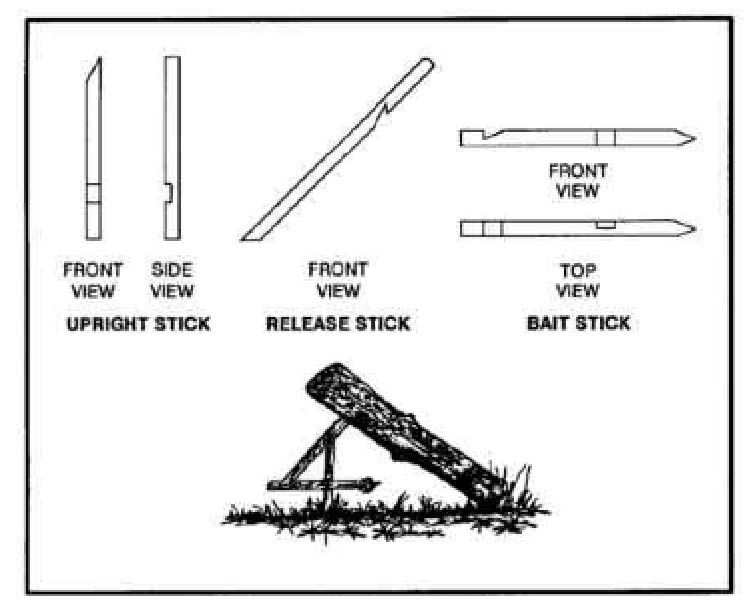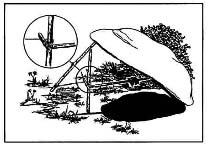DEADFALLS
Another basic trap is known as a deadfall. This type of trap can almost always be constructed from materials you stumble across in the wilderness. Rocks and tree branches are both excellent materials to use when creating a deadfall.
In its simplest form, a deadfall is nothing more than a heavy object propped up by sticks to form a trigger system. When an animal enters the trap (usually because of bait stashed within the trap), the trigger mechanism is tripped and the heavy object falls on the animal, crushing it instantly.
The deadfall pictured above is known as a figure fall deadfall because the sticks used to make the trigger assembly resemble the number ‘4’ when constructed properly. Any sticks of similar diameter can be used to construct this trap and the length can be adjusted by either cutting or breaking the sticks as needed. Although the figure four deadfall is very effective, it takes some practice to get the stick lengths and balancing points correct. This deadfall design is also difficult to master because the sticks used for the trigger must be grooved to work.
This is easily accomplished with a knife but could be difficult at best if a knife is not available. It can also be dangerous because your hands are often under the weighted object while setting up the trigger.

One wrong move and you could end up being the one who gets crushed. Another deadfall design that is much easier to construct is one that has been used by the Paiute Indians for centuries. Aptly named the Paiute deadfall, this design relies on a piece of cordage to maintain tension on the support sticks until the trigger is activated.
This type of deadfall is actually more sensitive than the figure four (increasing the chances of catching game) and it is also safer to construct because your hands under not underneath the weighted object during the assembly process. The Paiute deadfall is easy to build. Two sticks of similar length support the weight of the rock, tree stump, or other heavy object.
A small twig is used to form the trigger mechanism and a long, thin branch is used to hold the bait. Cordage is attached to both the trigger stick and the upper support stick. The trigger is wrapped around the lower support stick and held in place by the bait stick. When an animal attempts to get the bait, the bait stick moves, the trigger stick unwraps from the lower support stick, and the entire trap falls down on the animal.


